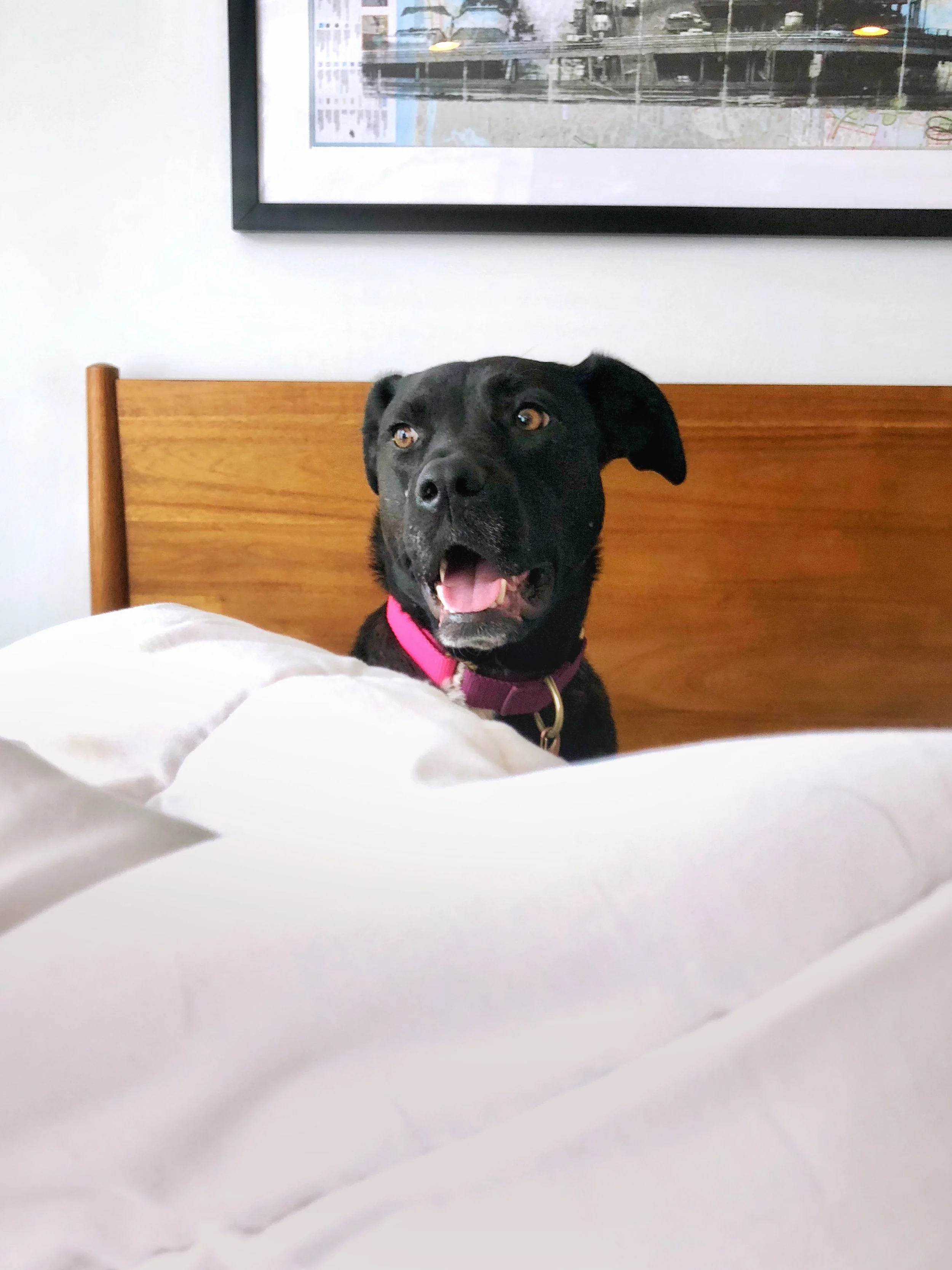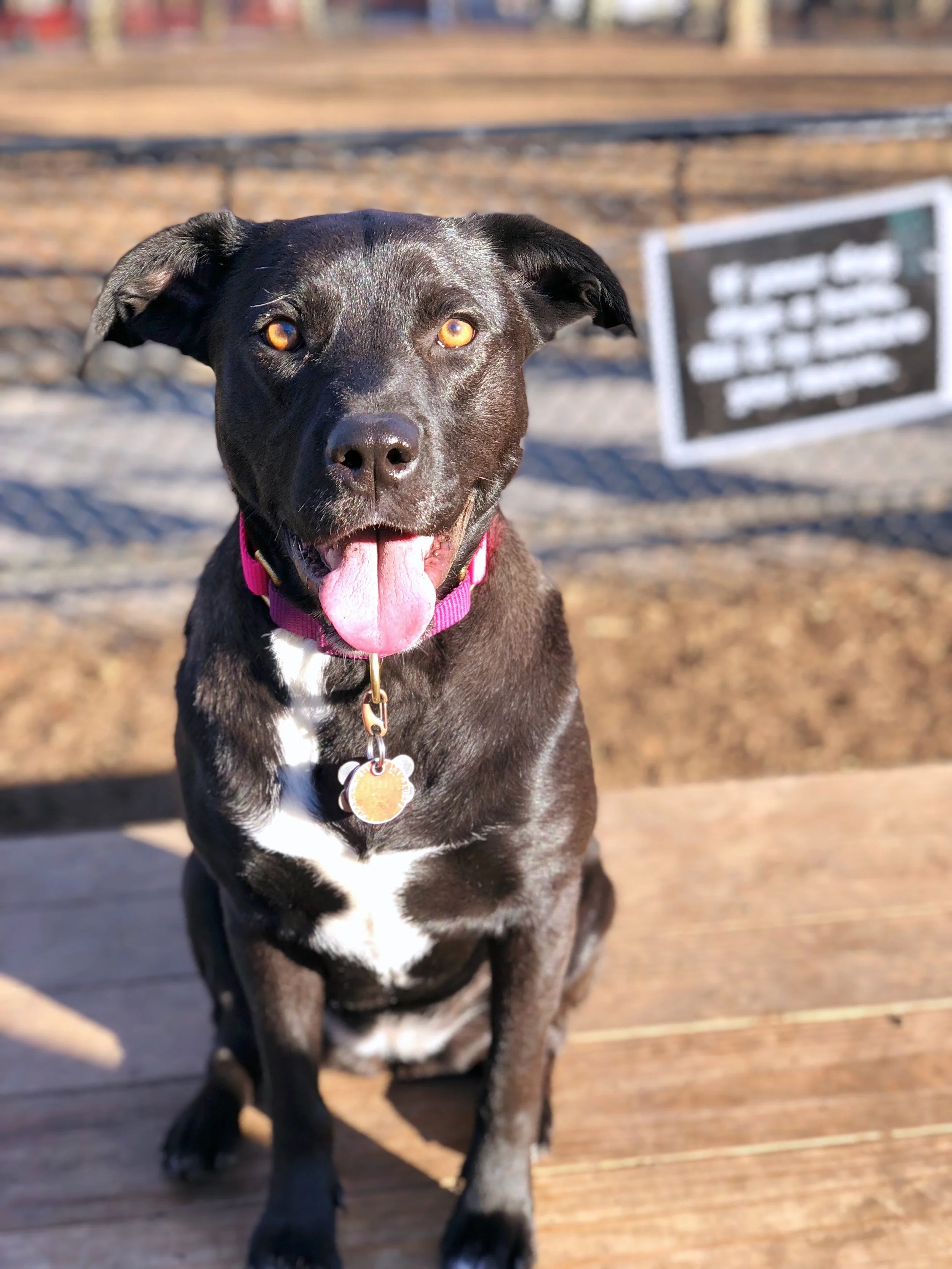What's that weird thing on her nose?

One of the most common questions we get with Cooper has to be "What is that thing on her nose?"
The Transitional Leash helps Cooper stay in a loose-leash heel with her dog walker
When we first got Cooper, we used what we thought was the standard tool- a step-in, back-clip harness. We were shocked when our docile, 40lb shelter dog was practically giving us an upper body workout with how hard she was pulling us down the street, "Super manning" on her hind legs forward throughout every walk. It wasn't enjoyable for us, and it wasn't enjoyable for Cooper. We contacted a local trainer for help and after one session working with a new tool, we were sold. The Transitional Leash was the solution for us.
Contrary to what many people think- it's not a muzzle at all! Although, we do support the proper conditioning and use of muzzles as they can be amazing tools for dogs. The red leash we use with Cooper that looks like a halti or gentle leader is called a K9 Lifeline Transitional Leash. The simplest way to explain the Transitional Leash is that it's pretty much just a slip lead with an extra loop that goes over your pup’s snout.
⠀⠀
Cooper can still eat, drink, bark, and even nibble on sticks and other items with her transitional leash on. It does not prevent her from opening her mouth.
⠀⠀
The Transitional Leash works by applying gentle pressure on your pup’s nose - a natural pressure point. So when your dog pulls, rather than yanking and straining their tracheas on a flat collar, it just puts a bit of pressure down gently on their snout to help keep your dog calm and focused on you.
⠀⠀
It’s not a one step fix to pulling or focus on walks - you need to condition the tool correctly, like any other tool you’d use with your pup, and working with a trainer is the best way to ensure you’re doing it right. We worked with our wonderful trainer in Brooklyn, Canine Cohen last year to properly condition Cooper to the Transitional. Simply put, it involved putting the head halter on Cooper and holding the leash gently up to put gentle pressure on Cooper's nose until she understood that "Pressure" means "Sit". We then moved outside to structured walks.
The results were amazing. A dog that used to pull after skateboards and squirrels now was more focused on us, and all-around calmer. We've been believers ever since.
⠀⠀
Clear proof the Transitional doesn't bother Cooper one bit- she can still be goofy as usual!
One of the things we like most about the Transitional Leash is that it is, well, transitional. We can use it as a head halter when we need to (the thing over the nose), but in situations where Cooper is more comfortable, we can use it as a simple slip lead. The leash also comes with a built-in backup clip that connects to your dog's normal collar in the event your dog attempts to back out of their collar or bolt. This makes it an ideal tool for us to use with our dog walker, especially in light of all the lost dogs in Brooklyn recently!
An added bonus is that with the #OneLeashOneLife program with the Leash's creator, every purchase of the leash directly benefits a shelter dog in need. As rescue and adoption advocates, that's a program we can feel good about supporting.
If you have any questions about the Transitional Leash, or any tool we use, feel free to ask! We love hearing what you use that’s successful with your dog , too.
⠀⠀







